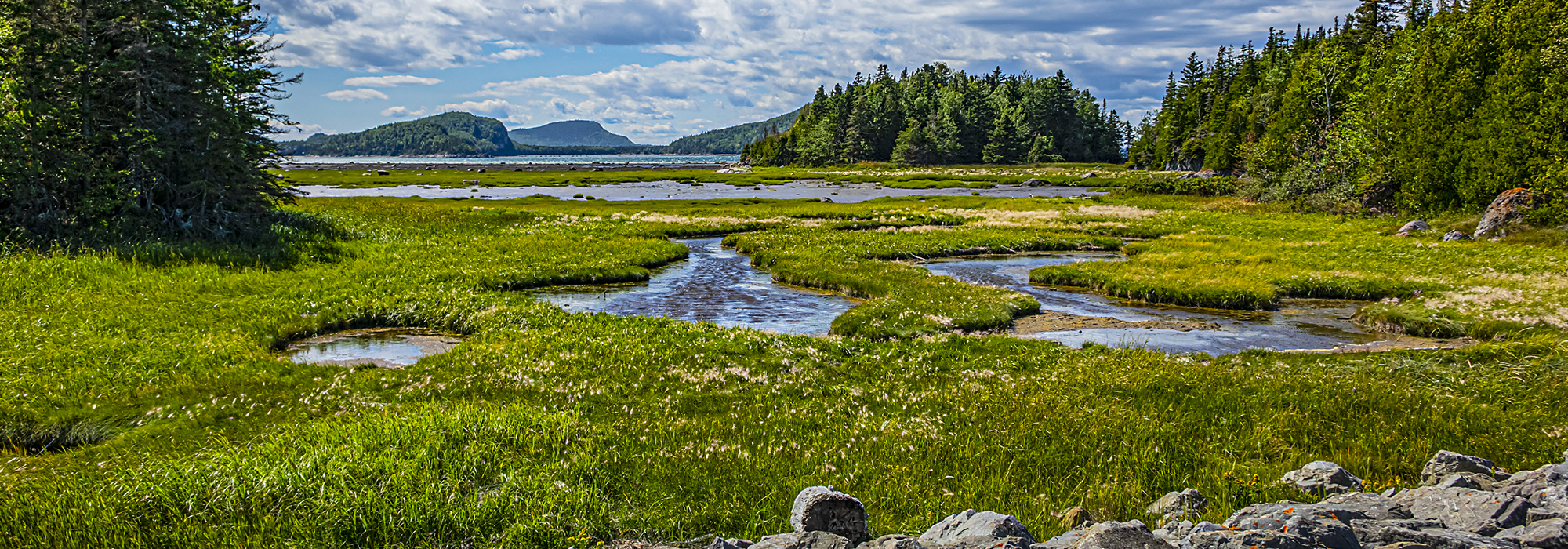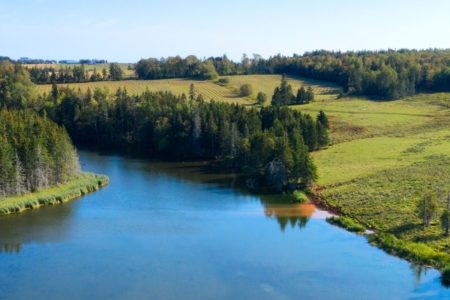
Dying whales, municipal sewage dumping, invasive species, marine conservation, fisheries allocation and petroleum exploration — these are but a few examples of contested and interconnected environmental issues in the Gulf of St. Lawrence in need of attention. Our existing management efforts are limited, and new mechanisms are needed to meet 21st-century marine environmental challenges.
The Gulf of St. Lawrence is a complex biological and social system. It is an inland sea of vast proportion, three times the size of Lake Superior, and borders on the shores of five provinces. Connecting the St. Lawrence-Great Lakes basin to the North Atlantic, the Gulf serves as the main transitway from the ocean to Canada’s industrial heartland in central Canada. Some 800,000 people inhabit the near-shore belt, many of whom are dependent on its resources. These characteristics underline the critical interplay of location and political jurisdiction.
Current management of the Gulf’s marine environment falls short on three grounds.
First, the penchant for administrative specialization, while good in theory, has led to poor outcomes. The issue is that the Gulf is not treated holistically; rather, the responsibility for policy development and delivery is divided among multiple departments, thus creating competition for statutory authority and scarce dollars. Here, closed networks of decision-makers controlling policy are the norm, limiting cross-sector responses to environmental challenges.
Second, there is a pronounced tendency for the federal and provincial governments and the five provincial governments to operate in isolation. Even though the government of Canada holds a predominant role in open water, the sensitive coastal belt involves provincial authorities. Federal-provincial collaboration is often required, yet a willingness to broker such interaction across departments and between levels of governments is elusive.
Lastly, avenues for popular participation are lacking. No one speaks for the Gulf as a whole, as a biophysical and sociocultural community, so policy agendas are tilted toward established institutional interests. The representational gap is a familiar one in environmental politics. The pattern of political and public involvement remains episodic and reactive and dependent largely on agendas being determined elsewhere. In this sense there is a democratic deficit when it comes to political mobilization and decision-making in the Gulf of St. Lawrence bioregion.
We propose three ways to address these failings in the existing governance framework. Although new ideas are needed, Gulf environmental governance cannot and should not be refashioned on a blank page. Rather, modifications should build on successes, where they do exist. If the Gulf of St. Lawrence is a “sea of many voices,” to paraphrase Cynthia Lamson, then it is important to respect and include these diverse voices.
Countering administrative specialization
There are sound reasons for administrative specialization in the era of modern government. Yet it needs to be recognized that specialization multiplies boundaries, reducing complex wholes to collections of parts. While the approach works well in some fields, it can amplify problems in other parts of ecosystems and allow difficulties to grow without getting enough attention.
Boundaries come in various shapes and sizes. Consider the approach of the Department of Fisheries and Oceans (DFO), which divides the Gulf among three territorial “regions” or DFO field bureaucracies. Each of these regions is led by a director-general who reports to the senior executive staff in Ottawa. Within each regional bureaucracy there are multiple area offices, and each regional headquarters houses technical specialists who deliver a range of fisheries and oceans programs.
There is room for debate about the suitability of this structure. It reflects the reality that there are three distinct shoreline regions that have historically, by reasons of distance, culture and language, been estranged from one another. But is it effective in addressing the larger Gulf environment? We need to engage a range of policy measures to bridge the divides, including memorandums of agreement, joint coordination and review committees, legally mandated cross-agency consultations and shared sponsorship of action plans.
Formal designation of shared jurisdictional responsibilities in the Gulf
The Gulf’s environmental challenges extend farther than any one government’s reach. But governments seem to find it harder to acknowledge shared responsibilities than to defend their jurisdictional autonomy.
A statement by first ministers is a policy tool that carries considerable weight. The challenge is to find an occasion for first ministers to endorse the sharing of responsibilities in the Gulf. The Atlantic premiers should invite the first minister of Quebec to join them at a special session. Ottawa should be invited as well. Such sponsorship would signal that the five provinces, in concert with Ottawa, aspire to be leaders in Gulf environmental management.
While such a meeting and statement would seem to be a simple and virtuous step, no one should underestimate the barriers. For one, Quebec remains ambivalent about the authority of the federal Oceans Act. For another, political leaders are reluctant to commit to agendas where the costs and instruments are not fully within their control. However, a carefully crafted joint statement could be aspirational rather than programmatic. It would signal recognition that the Gulf of St. Lawrence represents a complex and urgent field for environmental review.
A Gulf of St. Lawrence marine environmental council
A third approach would be to create a Gulf of St. Lawrence marine environmental council as an instrument for popular political involvement and partnership. It would address the severe underrepresentation of civic interests in Gulf environmental matters and amplify civic participation. The council would have three principal roles: enhance public awareness, broaden policy deliberations and offer policy advice.
Representation would be flexible and drawn from each of the five provinces, including from the ranks of fishers, watershed groups, First Nations, small craft harbour users and conservation groups. The council could have yearly meetings at sites that rotate within the Gulf region, as well as coastal caucuses to bring together various actors. A moderated online network could be maintained, to explore issues and to offer a medium for information exchange.
A council could provide a multilevel structure that encourages environmental conversations at the community, coastal and pan-Gulf scales, with activity that never stops. Field reports would filter in from citizen observers. A pre-established list of environmental priorities would determine the agendas for annual council gatherings. Meaningful preparatory work would be shared in advance. Channels of communication would flow upward as much as downward, as well as horizontally between representatives and members. To underscore the council’s legitimacy, an endorsement of its mandate by the relevant federal and provincial authorities would be essential, as would core funding.
Gulf environmental management does not end with these three proposals; other possibilities can and should follow. It is crucial to reshape the structures of power in the Gulf of St. Lawrence — to acknowledge the urgency of this marine challenge, to diminish the costs of administrative roadblocks and to alter the imbalance between state and society in Gulf politics.
Photo: Shutterstock, by Kiev.Victor.
Do you have something to say about the article you just read? Be part of the Policy Options discussion, and send in your own submission. Here is a link on how to do it. | Souhaitez-vous réagir à cet article ? Joignez-vous aux débats d’Options politiques et soumettez-nous votre texte en suivant ces directives.










